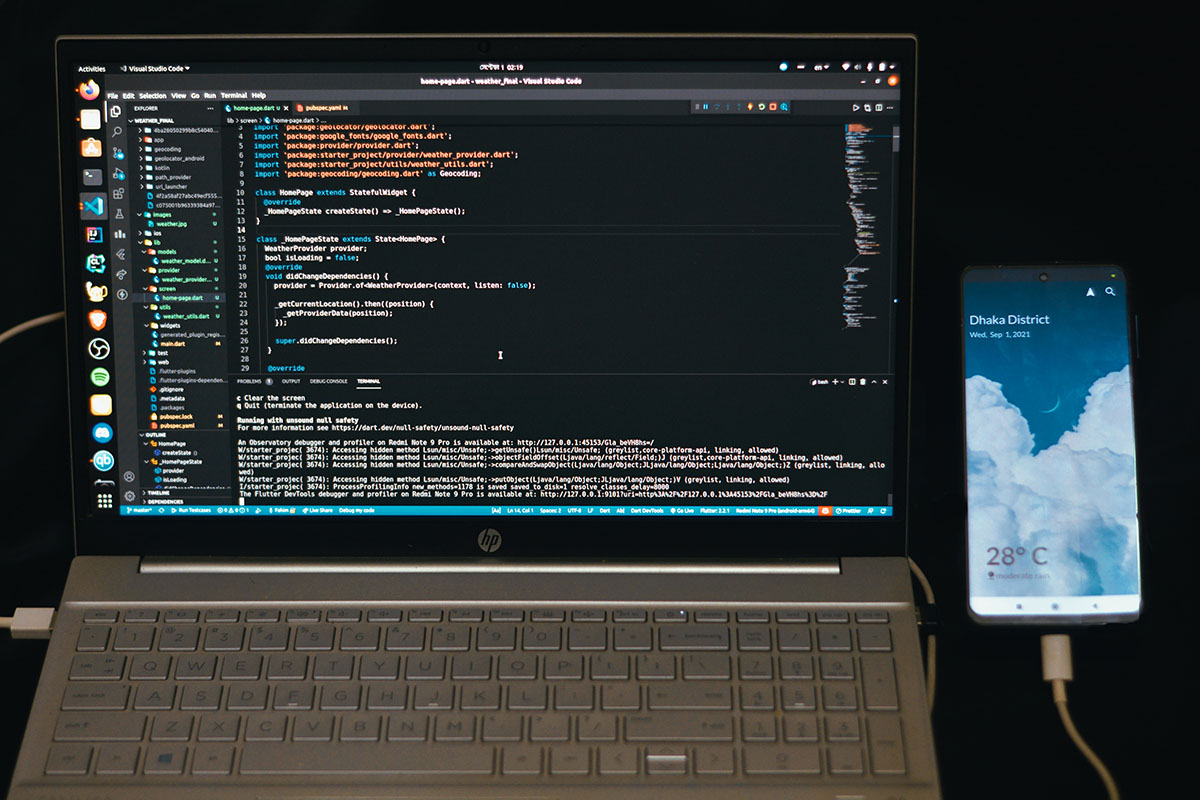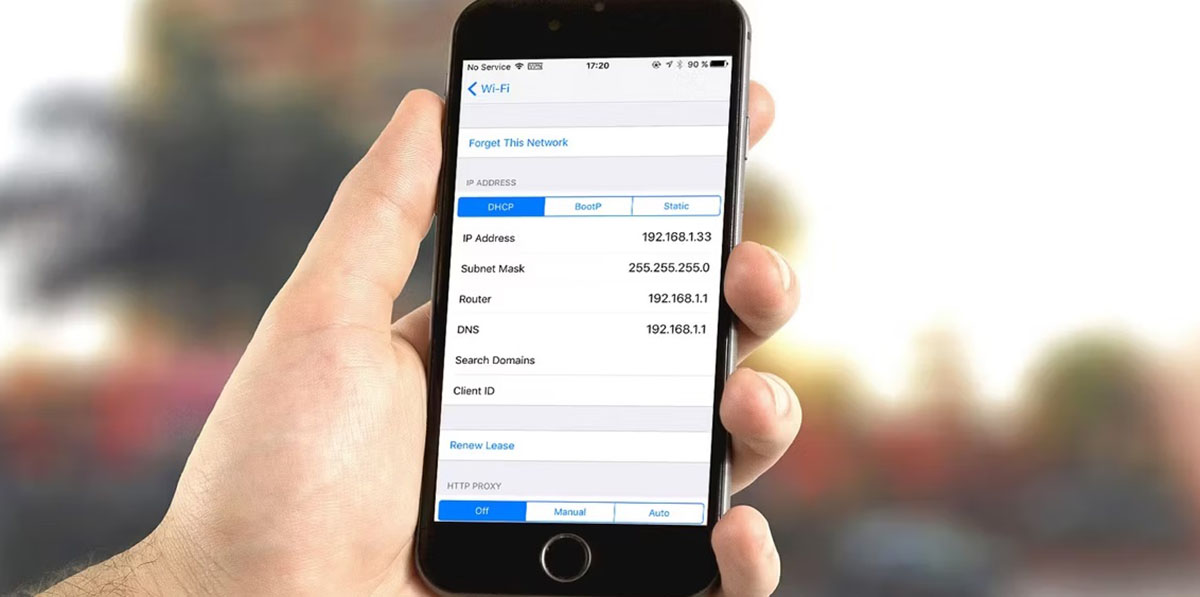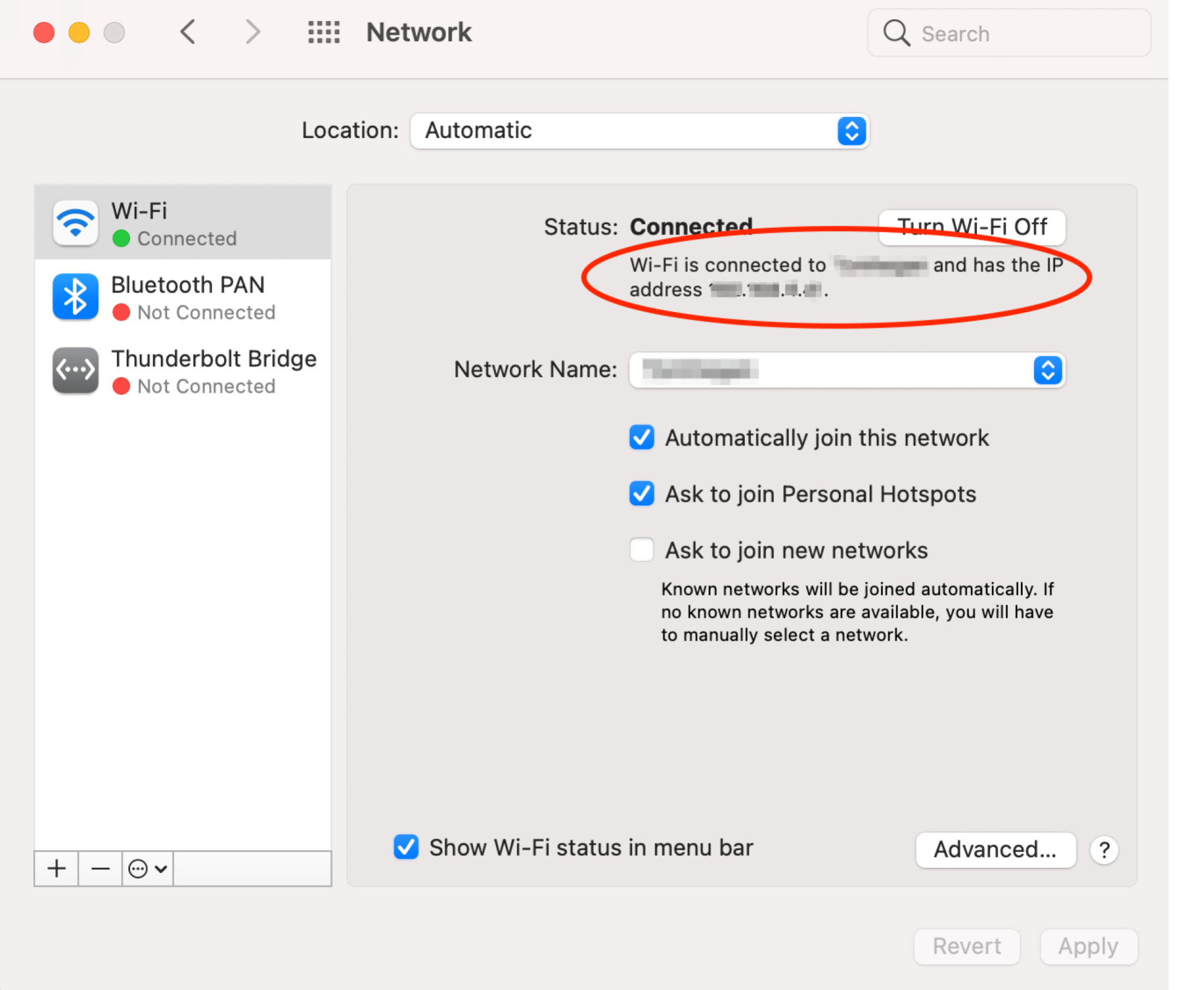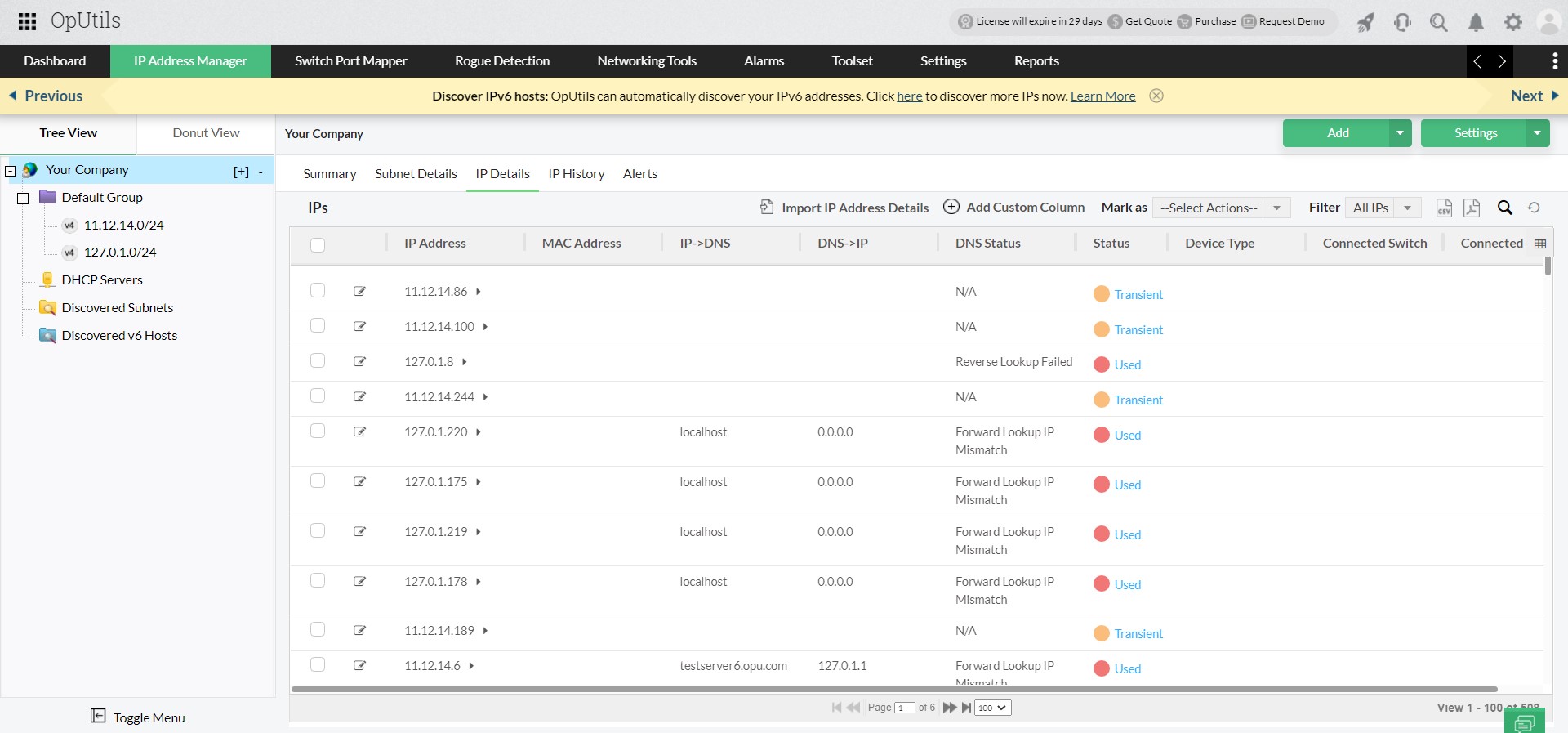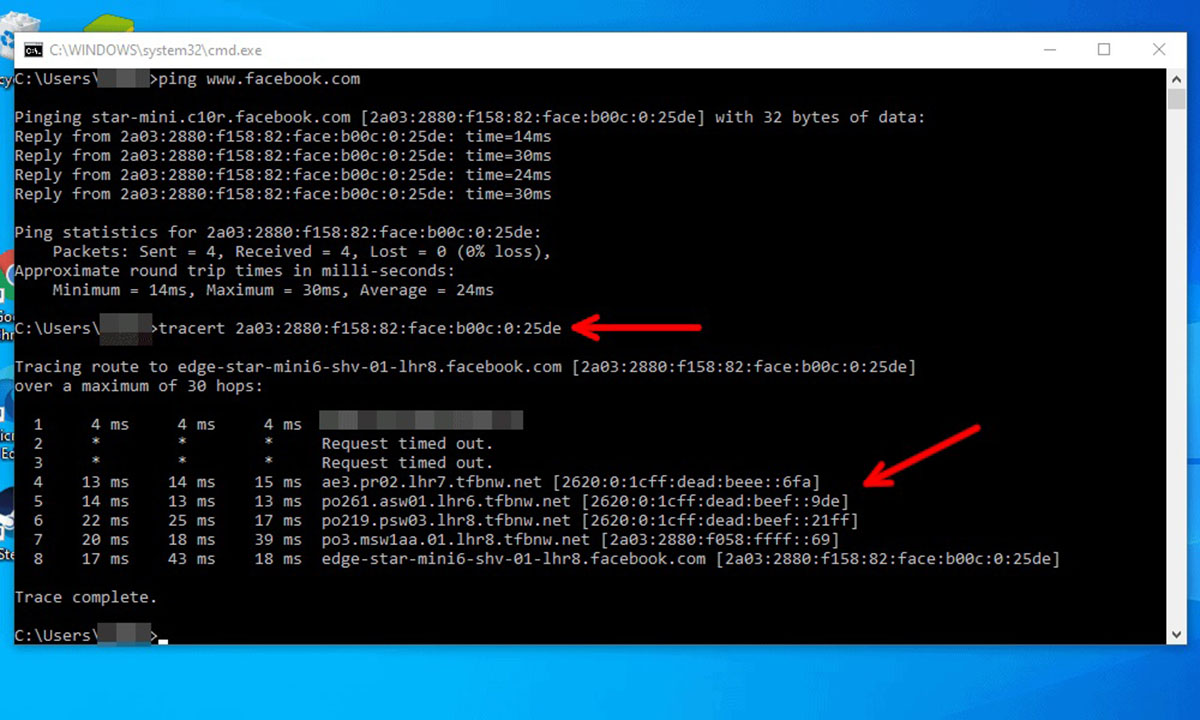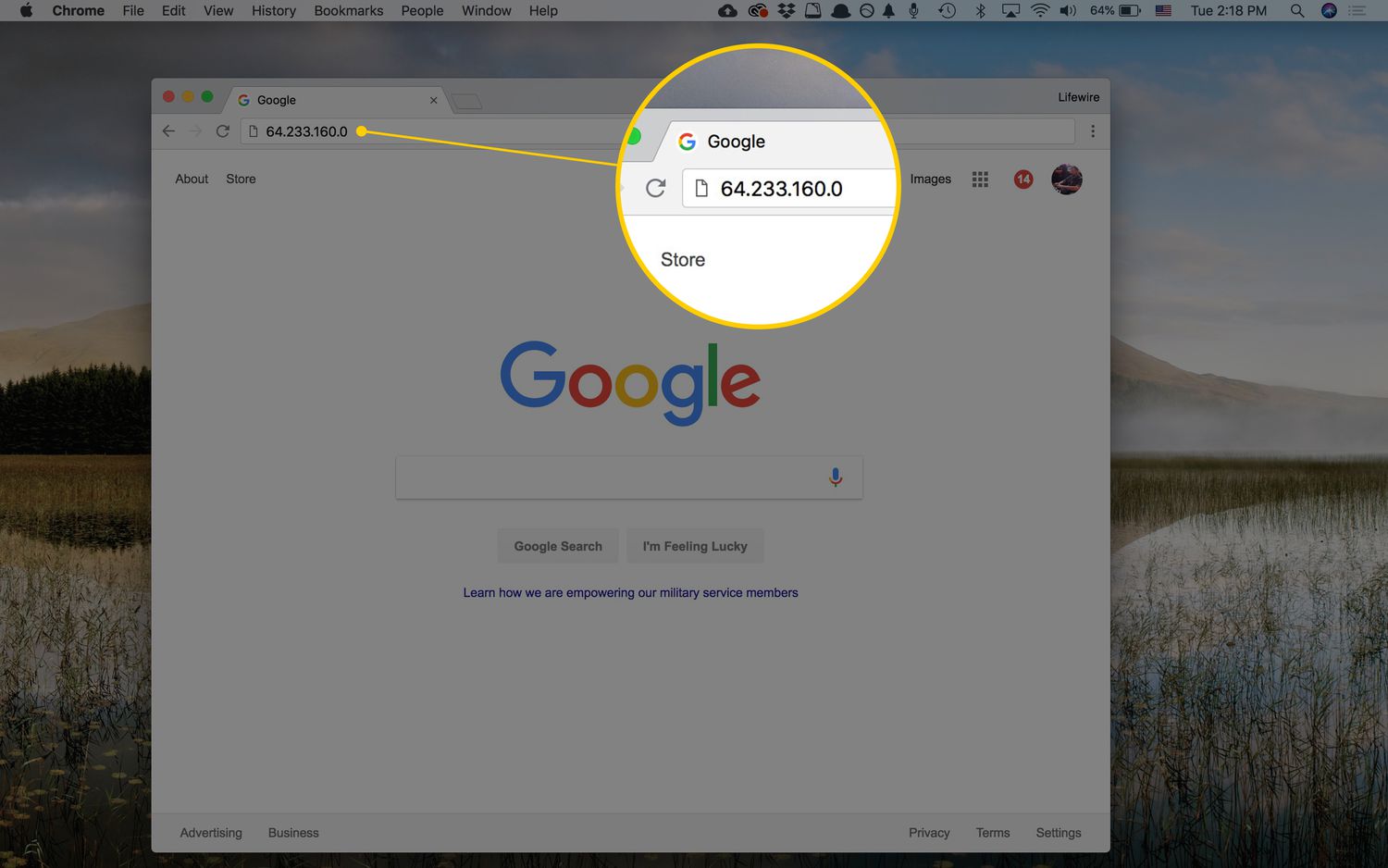Introduction
Welcome to the exciting world of IP address tracking! In today’s digitally connected world, it is becoming increasingly important to understand the concept of IP addresses and how to track them. Whether you are a website owner looking to gather valuable information about your visitors or an individual curious about the origins of an email or a message, tracking IP addresses can provide you with valuable insights.
An IP address, or Internet Protocol address, is a unique numerical identifier assigned to every device connected to a computer network. It serves as the device’s “virtual address” and allows communication between devices over the internet. By tracking IP addresses, you can determine the geographical location of the device, the Internet Service Provider (ISP) used, and other pertinent information.
So, why would you want to track IP addresses? There are various reasons why individuals and businesses find IP tracking beneficial. For website owners, IP tracking can help analyze visitor demographics, monitor website traffic, and identify potential security threats. Law enforcement agencies may also utilize IP tracking to investigate cybercrimes, locate suspects, and gather evidence. Moreover, individuals can track IP addresses for personal reasons, such as verifying the authenticity of an email or identifying the source of online harassment.
In this article, we will explore various methods you can use to track IP addresses. From utilizing specialized websites and tools to diving into email headers, analyzing server logs, using social media platforms, and accessing router or modem settings, we will discuss each method’s advantages and limitations.
By learning how to effectively track IP addresses, you can gain a deeper understanding of the online world and make informed decisions based on the insights gained. So, let’s dive in and discover the intriguing world of IP address tracking!
Understanding IP Addresses
Before delving into the methods of tracking IP addresses, it is crucial to have a solid understanding of what an IP address is and how it works. As mentioned earlier, an IP address represents a unique numerical identifier assigned to devices connected to a computer network.
There are two versions of IP addresses in use today: IPv4 (Internet Protocol version 4) and IPv6 (Internet Protocol version 6). IPv4 addresses consist of four sets of numbers separated by periods, such as 192.168.0.1. Each set can range from 0 to 255, allowing for a total of approximately 4.3 billion unique IPv4 addresses. On the other hand, IPv6 addresses are expressed in hexadecimal format and are significantly longer, allowing for trillions of unique addresses.
The basic structure of an IP address consists of two parts: the network identifier and the host identifier. The network identifier identifies the particular network the device is connected to, while the host identifier distinguishes individual devices within that network.
IP addresses can be dynamic or static. Dynamic IP addresses are assigned by an ISP temporarily and can change over time, while static IP addresses are manually configured and remain constant. Most home users and small businesses use dynamic IP addresses, while larger organizations often utilize static IP addresses for better control and stability.
Furthermore, IP addresses can be categorized into private or public addresses. Private IP addresses are used within local networks and are not accessible from the public internet. They allow devices within the same network to communicate with each other without being exposed to the broader internet. Public IP addresses, on the other hand, are unique addresses assigned to devices directly connected to the internet. These addresses are visible to other devices and can be used to identify and communicate with them.
To track an IP address effectively, it is essential to understand its components and the underlying system. By gaining this comprehension, you will be better equipped to navigate the world of IP address tracking and extract valuable information from the addresses you encounter.
Why Track IP Addresses?
Tracking IP addresses offers numerous benefits for individuals, businesses, and organizations alike. Let’s explore some compelling reasons why tracking IP addresses can be advantageous:
1. Website Analytics: By tracking IP addresses, website owners can gather valuable insights into their online visitors. Understanding the geographical location of visitors, their browsing behavior, and the devices they use can help improve website performance, optimize content, and enhance user experience.
2. Security Monitoring: IP tracking enables businesses to monitor their network for potential security threats. By analyzing IP addresses accessing their systems, organizations can detect and mitigate unauthorized access attempts, identify potential vulnerabilities, and safeguard sensitive data.
3. Preventing Fraudulent Activities: Tracking IP addresses can help identify and prevent fraudulent activities, such as online scams, phishing attempts, and identity theft. By monitoring IP addresses associated with suspicious activities, businesses and individuals can take proactive measures to protect themselves and their customers.
4. Content Localization: IP tracking provides the ability to deliver localized content based on the geographic location of website visitors. This allows businesses to tailor their content, advertisements, and promotions to specific regions or countries, resulting in a more personalized and targeted user experience.
5. Law Enforcement Investigations: IP address tracking plays a crucial role in cybercrime investigations. Law enforcement agencies use IP addresses to trace the origin of online threats, identify potential suspects, and gather evidence for legal proceedings.
6. Email Tracking: Tracking IP addresses in email headers can help determine the origin and authenticity of emails. This is particularly useful in identifying spam, tracking down email scammers, and verifying the legitimacy of business communications.
7. Geolocation Services: Tracking IP addresses can be utilized by geolocation services to provide targeted advertisements, weather updates, language preferences, and other location-specific information to users. This enhances the user experience and allows businesses to customize their services based on user location.
8. Network Troubleshooting: When encountering network issues, tracking IP addresses can aid in troubleshooting and identifying the source of the problem. By analyzing the IP addresses of devices experiencing connectivity issues, network administrators can isolate and resolve network-related problems efficiently.
These are just a few examples of the advantages of tracking IP addresses. Whether you are interested in improving website performance, enhancing security measures, or gaining insights into online activities, tracking IP addresses can provide valuable information that can be leveraged to achieve your objectives.
Methods to Track IP Address
Tracking IP addresses entails utilizing various methods and tools to gather information about the origins and locations of devices connected to a network. Here are some effective methods you can use to track IP addresses:
- Using Websites or Tools: There are numerous websites and online tools available that allow you to track IP addresses. These platforms provide detailed information about the IP address, including the geographical location, ISP, and other relevant data. Simply enter the IP address you wish to track, and the website or tool will provide you with the relevant details.
- Using Email Headers: Email headers contain valuable information, including the IP address of the sender. By examining the email headers, you can extract the IP address and use it to determine the sender’s location. Most email clients have options to view the full headers of an email, which will reveal the IP address information.
- Analyzing Server Logs: Server logs compile information about incoming requests to a server, including the IP addresses of those making the requests. By analyzing these server logs, you can trace IP addresses back to specific activities, such as website visits, online transactions, or interactions with your server.
- Using Social Media Platforms: Social media platforms often record the IP addresses of users when they access their accounts or engage in online activity. While not always accessible to the general public, law enforcement agencies can request this information to track the IP address of a specific user and investigate any potential criminal activities.
- Accessing Router or Modem Settings: If you have access to the router or modem connected to the network, you can log in to the admin settings and view the IP address information of connected devices. This method is useful for tracking devices within a local network, such as devices connected to your home Wi-Fi network.
Each of these methods has its advantages and limitations. Some methods provide more detailed information, while others may only reveal basic data. It’s important to consider the purpose and context of tracking IP addresses to determine which method is most appropriate for your needs.
By utilizing these effective methods, you can track IP addresses and gain valuable insights into the origins and locations of devices connected to a network. Whether you are investigating potential security threats, analyzing website traffic, or verifying the authenticity of communication, these methods will assist you in tracking IP addresses and obtaining the information you need.
Using Websites or Tools
One of the most convenient and widely used methods to track IP addresses is by utilizing websites or online tools specifically designed for IP tracking. These platforms provide a user-friendly interface that allows you to easily enter an IP address and retrieve detailed information about it.
Using websites or tools for IP tracking offers several advantages. Firstly, these platforms provide comprehensive information about the IP address, such as its geographical location, country, city, and even the Internet Service Provider (ISP) associated with it. This is particularly helpful when you need to determine the approximate physical location of a device or verify the genuineness of an IP address.
These websites or tools often rely on vast databases that contain updated information about IP addresses and their associated data. This ensures that you are provided with accurate and reliable information when tracking an IP address. Some websites even provide additional features, such as network information, domain details, and the ability to perform reverse IP lookups.
The process of using these websites or tools is typically straightforward. Simply enter the IP address you wish to track into the provided search box and initiate the search. Within seconds, you will be presented with a report that contains the relevant data associated with the IP address.
It is important to note that while many IP tracking websites or tools are free to use, some may come with limitations or offer premium features at an additional cost. These premium features may include access to more extensive databases, real-time tracking, and advanced analytics. Depending on your requirements, you may choose to utilize a free option or invest in a premium service for more in-depth IP tracking capabilities.
It is also worth mentioning that the accuracy of the information provided by these websites or tools can vary. Factors such as the complexity of the IP tracking algorithm, the size and quality of the database, and the frequency of updates can influence the accuracy of the results. Therefore, it is recommended to cross-reference the information obtained from multiple sources to ensure its reliability.
Overall, using websites or tools for IP tracking is a convenient and accessible method that allows you to quickly gather information about an IP address. Whether you are investigating suspicious online activities, monitoring website traffic, or verifying the authenticity of an IP address, these websites and tools provide an efficient solution for tracking IP addresses.
Using Email Headers
When it comes to tracking the IP address of an individual who has sent you an email, examining the email headers can provide valuable information. Email headers contain metadata about the email, including the IP address of the sender’s device.
To access the email headers, you typically need to open the email, select the option to view the full headers or message details, and locate the section labeled “Received” or “X-Originating-IP.” This section usually contains the IP address of the email sender or the intermediate servers through which the email has passed.
By analyzing the IP address present in the email headers, you can trace the origin of the email and gain insights into the geographical location of the sender’s device.
Utilizing email headers for IP tracking can be particularly useful in situations where you receive suspicious or spam emails. By tracking the IP address, you can potentially identify the source of the email and take appropriate actions, such as reporting it to the relevant authorities or blocking further communication.
It is important to note that in some cases, email headers may include multiple IP addresses due to the email routing process. These IP addresses correspond to the servers through which the email has been forwarded before reaching your inbox. To determine the original sender’s IP address, you need to identify the first “Received” section or the IP address listed closest to the beginning of the email headers.
While examining email headers can provide valuable information, it is essential to remember that IP addresses obtained from email headers may not always lead directly to an individual’s exact location. In some cases, the IP address may lead to a general geographic area associated with the email service provider or an intermediate server. However, it can still provide valuable insights into the potential origin of the email.
Keep in mind that tracing IP addresses from email headers requires a certain level of technical understanding. It is recommended to familiarize yourself with the process or seek assistance from IT professionals if you are unsure about the steps involved.
Overall, utilizing email headers for IP tracking presents a valuable method to determine the origin of an email and potentially identify the sender’s location. By examining the IP address present in the email headers, you can gather crucial information that can assist in identifying spam emails, tracking down scammers, or verifying the authenticity of email communication.
Analyzing Server Logs
Another effective method to track IP addresses is by analyzing server logs. Server logs are records that log and store information about incoming requests to a server, including the IP addresses of the devices making those requests.
Server logs provide valuable insights into the activities occurring on a website or server. By examining these logs, you can track the IP addresses of visitors, identify the pages they accessed, monitor the frequency of visits, and gather other relevant data. This information can help you understand website traffic patterns, user behavior, and potential security threats.
When analyzing server logs for IP tracking, it is essential to focus on the IP address field within the log entries. This field typically contains the IP address of the device or the network from which the request was made.
By tracing the IP addresses recorded in the server logs, you can gain insights into the geographical locations of visitors or potential intruders. This information can be beneficial in various scenarios such as analyzing website traffic patterns, identifying potential malicious activities, or even customizing content based on geographic location.
It is important to mention that the level of detailed information available in server logs can vary depending on the server software and configuration. Some server software may provide more extensive logging capabilities, allowing you to track additional information alongside IP addresses, such as user agents, referrer URLs, or session IDs.
As server logs can accumulate a large amount of data over time, it is advisable to use log analysis tools or scripts that facilitate the extraction and interpretation of the relevant information. These tools can help filter out unnecessary data, generate reports, and provide visual representations of the data, making it easier to identify trends and patterns.
It is worth noting that analyzing server logs for IP tracking requires access to the server or website’s log files. Additionally, it may require some technical expertise or assistance from system administrators or IT professionals who are familiar with log analysis techniques.
By leveraging the power of server logs, you can track IP addresses and gain valuable insights into the activities occurring on your website or server. Analyzing server logs enables you to monitor website traffic, identify potential security threats, and tailor your online presence based on user behavior and geographic location.
Using Social Media Platforms
Social media platforms have become integral parts of our lives, and they can also be utilized for IP tracking purposes. Although it may not be accessible to the general public, law enforcement agencies and platform administrators can use social media platforms to track IP addresses and investigate potential online crimes.
Social media platforms often record the IP addresses of users when they access their accounts or engage in online activities. This allows platform administrators to have a record of user activity and potentially trace IP addresses back to specific individuals or devices.
By tracking IP addresses on social media platforms, law enforcement agencies can identify potential suspects involved in cybercrimes, harassments, or online frauds. It can assist in gathering evidence and building a case against individuals engaged in illegal activities.
While social media platforms typically do not provide public access to IP address tracking for users, they have tight security measures in place to protect user privacy. Only authorized personnel with the necessary legal authority can access IP address information for investigations or legal proceedings.
It’s important to note that IP tracking on social media platforms is primarily performed by the platform administrators or law enforcement professionals. As a regular user, you may not have direct access to IP tracking capabilities on social media platforms.
However, if you experience online harassment or threats on social media, it’s crucial to report the incident to the platform administrators or local law enforcement agencies. They have the necessary resources and authority to investigate and track IP addresses associated with the harmful activities.
Moreover, as a responsible user, it’s essential to be aware of your digital footprint and take precautions to protect your privacy on social media platforms. You can do this by setting strong privacy settings, being cautious about the information you share, and reporting any suspicious activities that may compromise your security.
In summary, while social media platforms have measures in place to protect user privacy, they can be utilized for IP tracking purposes by authorized personnel, such as law enforcement agencies. Tracking IP addresses on social media platforms plays a vital role in investigating cybercrimes, identifying suspects, and ensuring a safe online environment for users.
Accessing Router or Modem Settings
An additional method to track IP addresses is by accessing the settings of your router or modem. If you have administrative access to the router or modem connected to your network, you can typically view a list of devices connected to your network, along with their corresponding IP addresses.
To access the router or modem settings, you need to know the default IP address of the device and enter it in the web browser on a device connected to the same network. This opens the router or modem’s configuration page, where you can log in using the administrator credentials.
Once logged in, you can navigate to the section that displays the connected devices. This section may be labeled as “Connected Devices,” “DHCP Client List,” or something similar, depending on your router or modem model.
The list of connected devices typically includes the device names or MAC addresses and their corresponding IP addresses. By matching the IP addresses to specific devices, you can track and identify the devices connected to your network.
This method is especially useful for tracking IP addresses within your local network, such as devices connected to your home Wi-Fi. It allows you to monitor devices and keep an eye on their activities. However, keep in mind that the scope of this method is limited to devices connected to your specific network.
It’s important to note that accessing the router or modem settings requires administrative access and knowledge of the login credentials. If you are unsure about accessing these settings, it is recommended to consult the documentation provided by your router or modem manufacturer or seek assistance from an IT professional.
By accessing the router or modem settings, you can track IP addresses within your local network and gain insights into the devices connected to your network. This method provides a convenient way to monitor connected devices and ensure the security and stability of your network.
Remember to use this method responsibly and within the legal boundaries. It is crucial to respect privacy and avoid using the information obtained through this method for malicious purposes.
In summary, accessing the router or modem settings allows you to track IP addresses of devices within your local network. By logging into the configuration page and navigating to the connected devices section, you can monitor the devices connected to your network and track their IP addresses.
Conclusion
Tracking IP addresses can provide valuable insights into the origins and activities of devices connected to a network. Whether you are a website owner looking to analyze visitor demographics, a law enforcement agency investigating cybercrimes, or an individual verifying the source of an email, the methods discussed in this article offer effective ways to track IP addresses.
Understanding IP addresses and their components is essential for successful IP tracking. From the network identifier to the host identifier, grasping the underlying structure ensures accurate interpretation of IP address data.
Using websites or tools designed for IP tracking is a convenient and user-friendly method. These platforms provide comprehensive information about IP addresses, such as geographical location and ISP details, helping you gain valuable insights quickly.
Analyzing email headers is particularly useful when investigating the authenticity of emails or identifying potential sources of spam or harassment. By examining the IP address in the email headers, you can trace the origin of the email and potentially identify the sender’s location.
Analyzing server logs allows you to track IP addresses accessing your website or server. It provides valuable information on website traffic patterns, user behavior, and potential security threats, aiding in optimizing website performance and enhancing security measures.
Social media platforms can be utilized by law enforcement agencies to track IP addresses associated with potential online crimes. While not accessible to the general public, these platforms play a crucial role in investigating cybercrimes and ensuring a safe online environment.
Accessing the settings of your router or modem allows you to track IP addresses within your local network. This method is useful for monitoring connected devices and ensuring network security.
It is important to remember that tracking IP addresses should be done responsibly and within legal boundaries. Respecting privacy, obtaining proper authorization, and seeking assistance when needed are essential to avoid any misuse of the information obtained.
By utilizing these methods, you can harness the power of IP tracking to gain insights, enhance security, and optimize online experiences. Understanding IP addresses and employing effective tracking methods empowers you to navigate the dynamic digital landscape with confidence.







